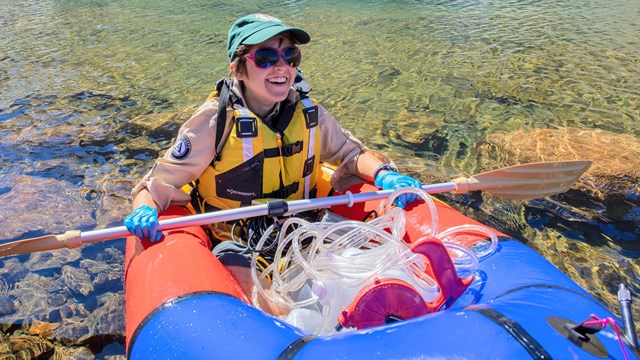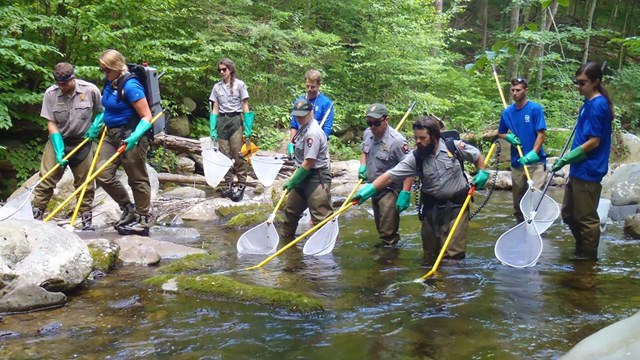
Who is Inventory & Monitoring? We're over 300 National Park Service staff from across the country. Get to know us a little better!

Discover real-world examples of how Inventory & Monitoring helps support park management and decisionmaking.

What does our inventory and monitoring work entail? What tools and techniques do we use? Some of the answers might surprise you!

Contact our staff in the Inventory and Monitoring Division's Central Support Office.
-
Why We Monitor
Learn about monitoring natural resources in national parks, where we work, and what we're discovering.
- Duration:
- 5 minutes, 5 seconds
Primary Goals
National Park managers across the country need a broad-based understanding about the status and trends of park natural resources. The Inventory & Monitoring Division systematically gathers and analyzes information on the plants, animals, and ecosystems that are within parks.
Parks use this information for planning, research, education, and to help guide decisions related to park management. Results are also shared widely with other agencies, researchers, and scientists.
Inventory & Monitoring staff and networks share a set of common goals, established when the division was first launched.
- Inventory the natural resources under National Park Service stewardship to determine their nature and status.
- Monitor park ecosystems to better understand their dynamic nature and condition and to provide reference points for comparisons with other, altered environments.
- Establish natural resource inventory and monitoring as a standard practice throughout the National Park system that transcends traditional program, activity, and funding boundaries.
- Integrate natural resource inventory and monitoring information into National Park Service planning, management, and decision making.
- Share National Park Service accomplishments and information with other natural resource organizations and form partnerships for attaining common goals and objectives.
To accomplish these goals, more than 280 parks with significant natural resources were grouped into the 32 I&M networks, which were determined based on geography and shared natural resource characteristics. The network organization increases collaboration among parks, information sharing, and economies of scale in natural resource inventory and monitoring.
Organizational Structure
I&M is under the National Park Service's Natural Resource Stewardship and Science Directorate (NRSS). The directorate provides scientific, technical, and administrative support to national parks for the management of natural resources.
Staff at the Inventory and Monitoring Central Support Office, based in Fort Collins, Colorado, work with all 32 I&M networks to establish priorities, develop standards, and set the overall direction of the division.
History
Recommended for decades, I&M finally began as a small program at four prototype parks in 1992. It was reinvented in 2000, when the Natural Resource Challenge provided enough funding to finally take the program servicewide, with 32 networks serving 270+ parks.
Last updated: February 12, 2025

